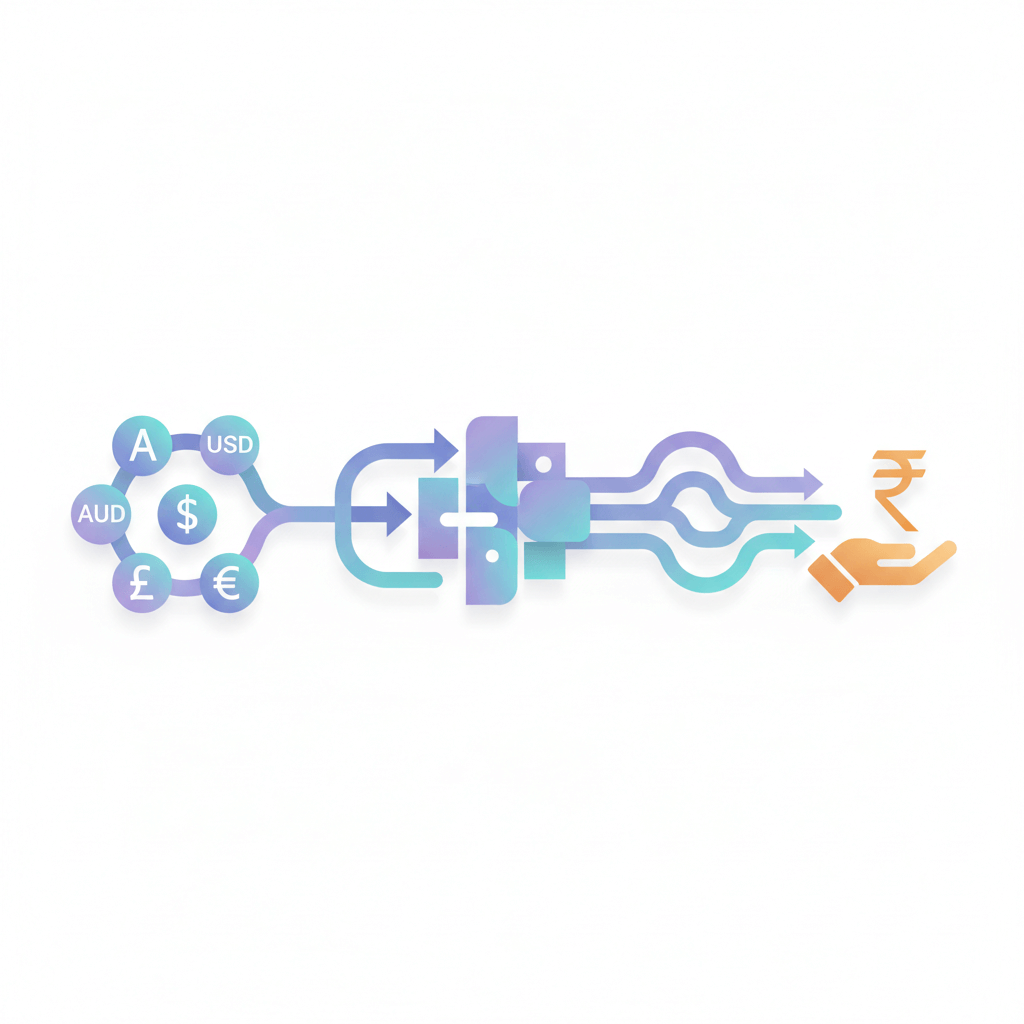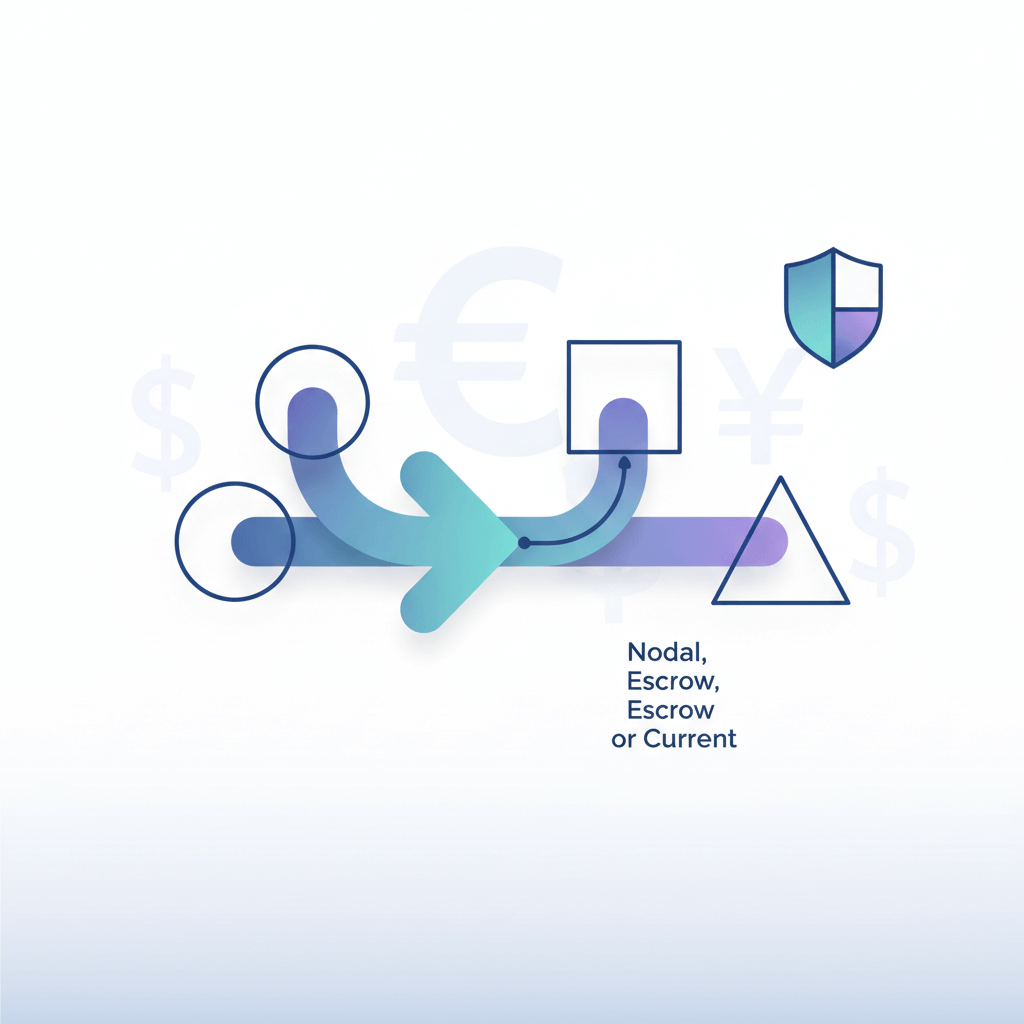Tired of visiting and calling your bank's RM for every wire? Try a faster way to send money with Karbon.
When a wire transfer seems lost, both sender and receiver contact their banks. The first step banks usually take is to pull the MT103.
Why? Because the MT103 shows the exact path of the payment, including when and where it left the sender’s bank. Without it, there’s no reliable way to prove that a transfer was initiated.
What is a SWIFT MT103?
The MT103 is a standard message format used in the SWIFT network to record customer cross-border payments.
It’s issued by the sending bank when a transfer is sent to another bank abroad. This structured message captures every critical detail including, who sent the money, who will receive it, how much, when, and through which channels.
Note:
- It is not proof of final credit.
- It is the official interbank record that the money has been dispatched.
Other Names for MT103
Banks sometimes call the MT103 by different names, such as:
- SWIFT copy
- SWIFT advice
- Payment confirmation message
Why is an MT103 Important?
Proof of Payment
It proves that the sender’s bank has executed the transfer. This is especially critical in disputes.
Easier Tracking of Funds
With the reference number and routing details, banks can trace where the funds are in the chain.
Global Standardisation
Because every bank uses the same format, there’s little room for misinterpretation across countries.
Compliance and Regulatory Use
Auditors, regulators, and tax authorities often request MT103 copies to verify the legitimacy of international transactions.
What Details Are Included in an MT103?
Every MT103 follows a globally standardised format. It includes:
- Sender details: name, account number, address
- Receiver details: beneficiary’s name, account number, bank details
- Transaction reference number: unique identifier for tracing
- Date of transaction
- Currency and amount
- SWIFT/BIC codes of sending and receiving banks
- Intermediary bank information (if funds pass through another bank)
- Purpose of payment / remittance information
- Charges applied (who bears the cost: sender, receiver, or shared)
SWIFT MT103 Format
Every MT103 message follows strict SWIFT formatting rules. It is built from multiple fields, each identified by a number and a tag, arranged in a fixed sequence. For example, field 20 is the transaction reference number, field 32A contains the amount and currency, and field 59 shows the beneficiary details.
The raw version looks very technical and is not easy to read for customers. That’s why banks usually share a simplified PDF copy. This copy highlights the most important fields such as sender, receiver, amount, date, reference, and charges.
What are the mandatory fields in SWIFT MT103?
MT103 SWIFT message with optional fields
An MT103 SWIFT message is a standard format for international wire transfers. It includes various fields, some of which are mandatory while others are optional. Here's an example of an MT103 message with optional fields:
Other important sections in the MT103 document
Know about these additional sections MT103 mandatory fields
SWIFT Field:
- 23E (MT103): Tag 23E in an MT103 message specifies the Instruction Code, providing additional instructions or information related to the payment, such as charges and fees.
- 111: Tag 111 in a SWIFT message typically refers to the Output Message Reference (MUR), a unique reference number assigned to a message by the sender for tracking and reconciliation purposes.
- F70: F70 in a SWIFT message indicates the Narrative Text, which allows for the inclusion of additional information or details related to the transaction, enhancing communication between financial institutions.
- 21: Field 21 in a SWIFT message, known as the Related Reference, contains additional reference information related to the transaction, such as a reference number or identifier provided by the sender for reconciliation purposes.
MT103 mandatory fields in business outward remittances from India
There are SWIFT fields used in financial transactions. These fields include:
- Transaction Reference Number (Tag 20): A unique identifier assigned by the sending bank for transaction identification.
- Bank Operation Code (Tag 23B): Indicates the type of transaction, often "CRED" for credit transfers.
- Value Date/Currency/Interbank Settled Amount (Tag 32A): Specifies the value date, currency, and the amount transferred.
- Ordering Customer (Tag 50a): Details of the sender, including account number and name.
- Beneficiary Customer (Tag 59): Details of the receiver, including account number and name.
- Details of Charges (Tag 71A): Specifies who bears transaction charges, such as SHA, BEN, or OUR.
- Account With Institution (Tag 57A): SWIFT code of the beneficiary’s bank.
- Intermediary Institution (Tag 56A): SWIFT code of any intermediary bank involved.
- Ordering Institution (Tag 52A/B/D): SWIFT code of the ordering institution, if different.
- Currency/Original Ordered Amount (Tag 33B): Specifies currency and original amount.
- Remittance Information (Tag 70): Additional details related to the remittance.
- Sender to Receiver Information (Tag 72): Additional instructions for the receiving bank.
Who Sends and Who Receives the MT103 Message?
This is often confusing because sender or receiver both don’t know where they can get a SWIFT MT103 from. The sending bank issues the MT103 message.
- The sending bank creates and transmits the MT103 through the SWIFT network.
- The receiving bank gets the message to know which funds are incoming.
- The customer (sender or beneficiary) never interacts with SWIFT directly. Instead, they can only request a copy from the sender’s bank.
An Example of an MT103 Message
Imagine a US company wiring 10,000 USD to an Indian IT agency. Here’s how it works:
- The US company gives instructions to its US bank to transfer the funds.
- The US bank sends an MT103 through SWIFT to the Indian bank.
- The MT103 contains all details: sender (the US company), beneficiary (the Indian agency), amount, currency, date, reference number, and charge instructions.
- If the funds are delayed, the Indian agency can ask the US company to share the MT103. This proves the transfer has been sent and helps the Indian bank trace it in their system.
When Should You Request an MT103?
It’s not needed for every transfer. But there are certain situations where it becomes important:
- When funds are delayed beyond the normal transfer time.
- When auditors or regulators ask for proof of payment.
- During disputes with customers or suppliers about whether money was actually sent.
- When a beneficiary insists on confirmation before crediting services or goods.
You don’t need an MT103 in these cases:
- Small transfers that reach within the expected time.
- When a simple debit or credit entry in your bank account is enough proof.
- When the receiving bank has already confirmed or credited the funds.
Who Can Request an MT103?
- Senders of funds: They have the right to request the MT103 from their bank. This is the most reliable method.
- Receivers of funds: They cannot usually get it directly from their own bank. Instead, they must ask the sender to obtain it and share it.
Tip for businesses: If you frequently deal with overseas payments, arrange with your bank to automatically provide MT103 copies for each transfer. This saves you from delays or disputes later.
How to Request a SWIFT MT103
- Make the transfer – Once the funds are sent, the MT103 is automatically generated by the sending bank.
- Contact your bank – Reach out to your relationship manager or support desk to request the copy.
- Provide details – Give them the transfer amount, date, and beneficiary information so they can trace the correct transaction.
- Wait for the document – Some banks provide it quickly and free of cost. Others may charge a fee, typically between $10 and $30.
Important: Only the sender’s bank can issue the MT103. Beneficiaries cannot request it directly from their own bank, even though they are receiving the funds.
Modern Alternatives to SWIFT Tracking
Fintech platforms like Karbon Business often provide built-in tracking dashboards. These show live updates without the need to request a separate MT103.
FAQs
MT103 vs MT202 (Customer vs Bank-to-Bank Transfers)
MT103 is used for customer credit transfers. This means when a person or company sends money to another person or company.
MT202 is used for bank-to-bank transfers. It is usually for settling funds between correspondent banks without showing customer details.
Do You Always Need an MT103?
No, not always. You only need an MT103 when you are sending or receiving money through SWIFT where customer details are part of the transfer. If it is just settlement between banks, an MT202 is used instead.
How to Track a SWIFT Payment Using MT103
The MT103 works like a payment receipt. It contains a unique reference number that your bank can use to trace the payment in the SWIFT network.
What is the Difference Between SWIFT MT103 vs SWIFT gpi?
MT103 is a static copy of the payment message. Once issued, it does not change. It is mainly used by senders, receivers, and auditors as proof of payment.
SWIFT gpi is a real-time payment tracking system. It shows live status updates as the payment moves through banks. It is used by banks, businesses, and customers. Some banks offer it free, while others may charge a premium fee.











